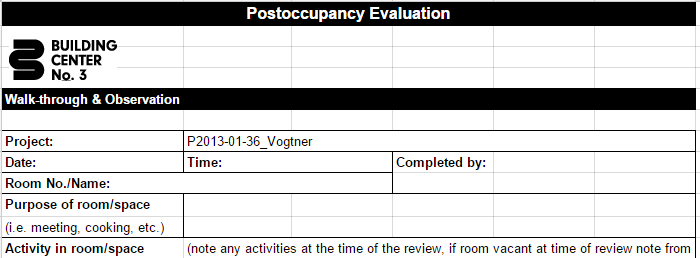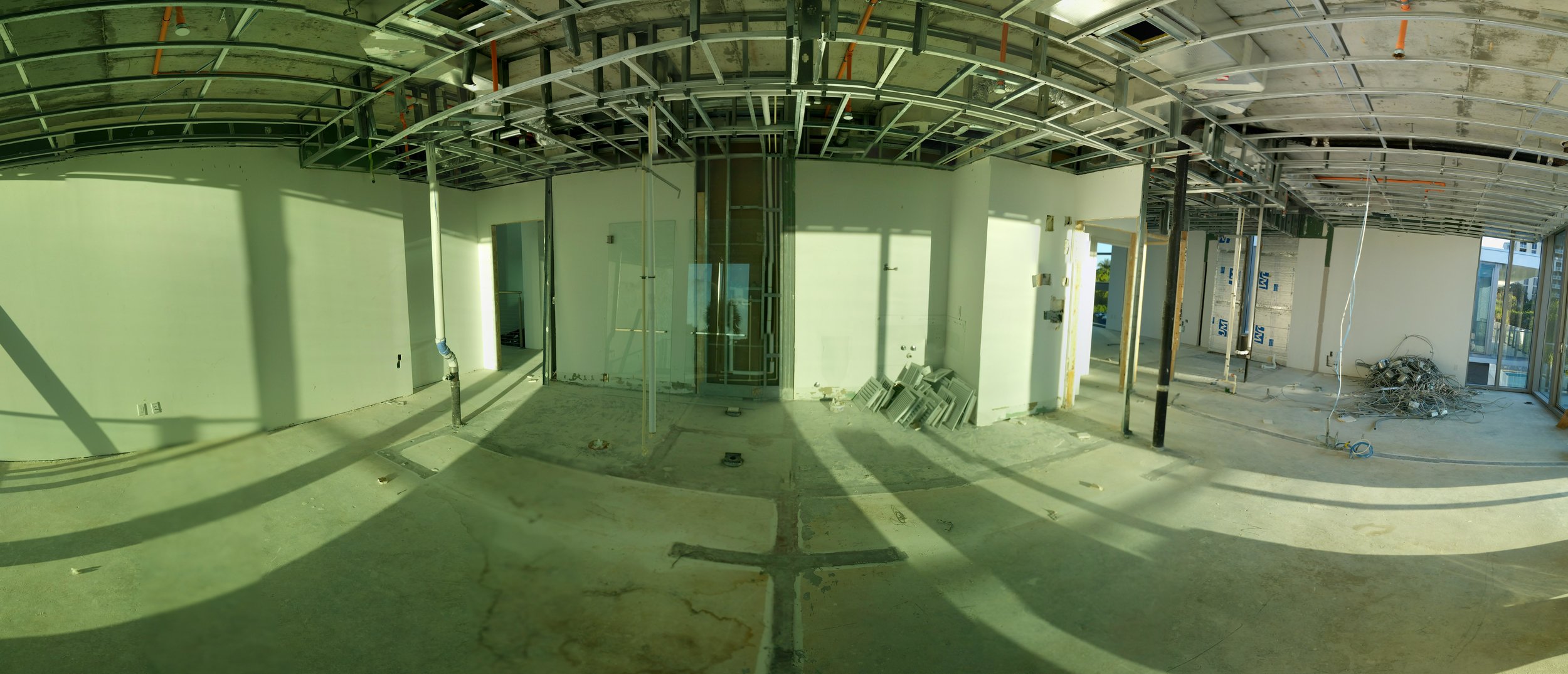South Florida slash pine is one of the most well known natives in the area. This tree represents the South Florida Pine Rockland landscape, a very endangered natural eco-system, and because of its shape this tree provides an extraordinary spatial relationship with the sky. Generally tall airy with tufts of pines needles mostly at the top of the canopy--this absent of density allows other surrounding plants to receive sunlight and coexist. If you would like to know more about this tree follow the link below to download the full description.
BC3 Principal Jason Tapia, AIA Presents at DASH for Second Year
Miami - Jason Tapia, AIA, Principal at Building Center No.3 (BC3), a design firm in Downtown Miami, presented for the second consecutive year at Design Architecture Senior High (DASH) in the Design District. Invited by architecture faculty member, Eric Hankin, this year’s presentation focused on the value of a professional degree in architecture and the alternative career paths available to graduates of these programs.
DASH is a Miami Dade magnet high school with intensive curriculum in architecture, industrial design, visual communications, entertainment and fine art. The architecture program is lead by instructor Eric Hankin. For the last two years Mr. Hankin has extended an invitation to Jason to speak before students in architecture and industrial design. This year over 50 students were in attendance, and asked a number of questions ranging from:
“Where do get your inspiration from as a designer?" to “What motivated you to start your own design firm?”
The presentation was titled, Critical Thinking: The Merits of Architecture Degree. The topic was loosely organized around what skills are taught in architecture school and how those skills can be applied to fields outside of the architecture profession. This year’s presentation featured Cornell University Graduate, Amanda Williams, Artist and Professor of Color Theory at the Illinois Institute of Technology; MIT graduate Jenna Fizel, former co-founder of Continuum Fashion; Columbia graduate, Michael Szivos, founder of SOFTlab; and MIT graduate, Skylar Tibbits, Computer Scientist and Professor at MIT. Each individual completed a degree in or a concentration in architecture but went on to practice and earn success in disciplines beyond the conventional architecture practice. ”The goal was to connect with students interested in an architecture degree but apprehensive about the longer term commitment to the profession. I wanted them see that the degree was not a constraint but rather a launch pad for other creative interests,” said Jason. “I wanted the presentation to be about the important skills all architecture graduates learn; I chose to work in the field and eventually start my own practice, but there are other paths just as rewarding.”
See the presentation below
What We Look for in a General Contractor (Part 02)
In part two of this topic we list some of the key questions to ask of the references offered by the General Contractor. If you missed Part One. We typically avoid questions that highlight personality or disposition. We came up with a list we typically ask when our clients involve us in the process:
-Was the GC the lowest bidder on the project? We find this insightful because it implies the GC was the lowest bidder and still managed to deliver a great product on time, on budget and with great service.
-What was the percentage difference between the bidders? This helps inform us who the GC was competing against. If all of the bids were clustered within 10-15% then that implies the drawings were good, the competition was competent and that the client did not necessarily choose based on price.
-How effective was the communication? GCs need to be approachable and accessible. During normal business hours the owner should be able to expect their phone calls answered (or returned promptly), emailed replied to or a meeting attended at the scheduled time. Construction induces a lot of anxiety and for a business owner or homeowner, knowing the contractor is accessible or will respond in a timely fashion brings peace of mind to what can be a chaotic and frustrating process. Construction involves risk, money, time and trust--the GC has an outsized influence in each.
-Was the project completed within the time frame promised? Projects are generally non-linear. Decisions are sometimes made during construction by the design team; the owner often makes changes, too. Unforeseen circumstances arise so the original time frame promised may change through no fault of the builder. However, a well organized GC should be able to evaluate with a measure of certainty the impact of a change on the overall construction schedule. Owners should expect and be given clear scheduling milestones and be made aware of the consequences of changes to those milestones. Open-ended or undefined time commitments do not pair well with trust and effective communication.
-How was the finished product? If the client is a reference then we assume the final product was acceptable but it is always important to ask. “Were you satisfied with the craftsmanship?”
-Was the warranty honored? Products break, and installations are sometimes faulty. The key is whether the warranty was honored and if it was addressed satisfactorily in a timely fashion. Having to chase a contractor for months to repair a defective plumbing fixture is not what we would define as honoring a warranty.
-Did the GC leave a clean job site each day? Regardless of whether a project is being occupied during construction (in the case of renovations) the GC should leave the job site orderly and clean. This reduces risk of injury, material losses in the form of theft or damage and sets the tone for subcontractors scheduled to work on the job.
-Were there lots of change orders? and how were they handled? Numerous change orders may not be the fault of the contractor. Sometimes the design team has an omission; the client makes changes or is indecisive with key decisions affecting the project schedule/budget; or the building inspector makes demands that were unforeseen. A contractor is entitled to profit, overhead and general conditions on every change order that is authorized. But it is up to the design team to review and approve each change order and offer the owner guidance. A good GC will offer alternatives to costly changes, if possible, and should be quick to seek the consultation of the design team before a situation reaches the point where a change order in the only recourse. Generally, early and effective communication are the key to crisis avoidance and resolution.
During the selection of an architect, owners should be sure that the design professional will be available to serve as a resource during the bid procurement process. Using AIA Standard Contracts ensures a balanced contractual relationship between owner and architect and will always include bid procurement consultation as part to the minimum scope of work for the architect.
BC3 Completes Three Postoccupancy Evaluations on Built Projects
Miami - Building Center No.3 (BC3), an award winning interdisciplinary design firm in Downtown Miami began conducting Postoccupancy Evaluations (POE) on completed projects in the last quarter of 2014. The results from the first group of completed evaluations validate the firm’s strategy of reconnecting with past clients in order to assess the performance of design selections. BC3 concluded that it both improved the relationship with existing clients and also assisted the firm in learning about what products, systems and installations worked best.
AIA Definition of Postoccupancy Evaluation
The American Institute of Architects states: Postoccupancy evaluation services address how well a facility contributes to the productivity, satisfaction, and well-being of the occupants and the goals of the organization. Emphasis is on evaluating the functional quality and efficient use of living and working environments. In the case of new construction or renovation projects, actual functions are compared to the program objectives of the project.
Results and Solutions
In the three completed projects evaluated by BC3, owners and users reported overall satisfaction with the performance of the design but had encountered deficiencies in the installation of certain equipment and assemblies. “In one of the residential projects we were informed that the grout work where the stone kitchen counter meets the backsplash consistently formed a hairline crack. The installer had honored the warranty and corrected the work twice but the problem persists. Our office concluded that they were using a grout product that proved ineffective given the weight of the stone counter/base cabinets and the wood frame flooring construction that naturally expands and contracts with humidity. We did the research, called a grout manufacturer and recommended the installer use the alternative product which was designed to be more elastic,” says Jason Tapia AIA, Principal at BC3. “With our knowledge of design and construction we were able to troubleshoot and propose a solution that solved the problem and ensured that our design was not compromised by installation problems.”
“Another example occurred in a completed commercial project where there were two rooftop AC units serving two separate cooling zones. Zone 1 served the workplace areas and Zone 2 served mostly unoccupied spaces. The two zones were divide by a large beam that prevented ductwork from being shared between spaces on either side of the beam; so the President’s office was on the same side of the beam as the computer server room. Both the computer room and the President’s office shared the same thermostat because of their location in relation to the beam. The client reported to us that the server room would risk overheating when the thermostat was optimized for his own comfort. We identified the server room as both the problem and where an affordable and simple solution could be applied. The server was on a ground floor adjacent to an exterior wall. We proposed the client install a mini-split AC unit. The interior would have a wall mounted Air Handler Unit and on the exterior of the wall would be mounted the condenser unit. This solution allowed the client to quickly and cost effectively augment the air flow into the server room and establish an optimal set temperature for the equipment. The existing ductwork supplying the room remained unchanged and would simply supplement the air supply from the mini-split in the room,” says Tapia.
POE Methodology
As implemented at BC3 the POE is will be performed at key milestones in a completed project’s lifecycle: six months, three years, and five years. Of course, achieving these goals requires the cooperation of the client. “We found that most of our client’s were receptive to giving us the time to perform the evaluations which typically lasted an hour. In their eyes it demonstrates our commitment to good design,” says Tapia.
Step 1 Identify
Identify all of the stakeholders in design and construction process. This includes vendors and the General Contractor but may not necessarily include the subcontractors.
Step 2 Observe
The evaluator performs the walk-through observations of each space within the scope of the design contract. For example, in a conference room, the observer reviews the condition of the furniture, wall finishes, quality of the lighting levels (using a calibrated light meter), temperature comfort, carpet durability and the performance of any AV equipment. In a residential project a similar series of observations might be made for a kitchen or master bathroom--different materials and equipment, but the same evaluation goal: is it performing as intended?
Step 3 Interview
The questionnaire component of the evaluation encourages the client/user to rate their satisfaction with the project and the performance of the design team during the contract. This helps BC3 evaluate individual team members staffed on the project and how effective the office is in serving its clients.
Step 4 Address Problems
The last step is to be a problem solver. “The intent of the POE is not to assign blame on the design team, the General Contractor or the installers, but rather to assist the client in solving problems,” says Tapia. “If the items are covered under warranty then we try and assist the client in filing a claim with the installer or product manufacturer. We do all of this as part of the original scope of the project.”
Get to know your Florida plants (01)
Sea grapes can be found all over South Florida; the leaves are tough and thick but have lovely unique shape. The fruit are edible and make good preserves--they are also popular with birds and squirrels. The tree is salt tolerant; we have often seen along the water's edge near bays and rivers. The white flowers are fragrant and very small. If you would like to know more about this plant follow the link below to download the full description.
What We Look for in a General Contractor (Part 01)
PART ONE
As designers both our residential and commercial clients often seek our advice when a project enters the construction bidding phase.
1) We review bids to ensure the full scope of work is represented in the proposal
2) We review the qualifications of General Contractors
3) Answer contractor’s questions during the bidding phase
We sat down as a team and reviewed the key information we look at, as designers, before recommending a General Contractor to one of clients. Here’s our list:
Check the GC’s previous work for projects of similar size and scale. General contracting requires excellent management, communication and organizational skills. These fundamentals are not easily scaled up without the proper experience or training. For example, a contractor who has only installed kitchens may not have the skills needed to build an addition to a home. The work for the latter carries more risk; requires more coordination between the subcontractors; involves structural work such as roof and and foundation that affect life safety; and demands and a more thorough understanding of trade sequencing and scheduling.
Request References and check them. We call the references of prospective GCs. Talking to a satisfied customer allows you to ask important questions about the his/her previous work and gives you insight into how effective they were in resolving problems. Every project encounters setbacks; the key is how the contractor handled the issue.
Visit Completed Projects. We prefer to visit the previous work of GCs. There is no substitute for seeing the completed project. By doing so you get to evaluate whether the project “withstood the test of time.” Craftsmanship and attention to detail are on full display if you have an opportunity to see the finished product. Naturally, when we are invited to see a completed work we expect the project to reflect the best of the contractor’s abilities. Read PART TWO to continue the discussion.
Get to know your Florida plants (01)
Color and a low maintenance plant in the garden is always desirable, the Angelonia angustifolia is an ideal addition. This plant will bloom all year round, attracting butterflies and different pollinators to the garden. If you would like to know more about this plant follow the link below to download the full description.
Introduction: Get to know your Florida plants series
Frequency: Every 4-6 weeks
BC3 is interested in preserving and improving the quality of our environment, and understands the importance of South Florida Landscapes. Native plants are not only beautiful, but low maintenance and easy to grow.
Why Native?
Preserving our ecology is not only a matter of preserving nature, it is a matter of preserving our future, of being aware of our surroundings and understanding that every action has consequences. South Florida has one of the most unique ecosystems, yet it is the most endangered of North America. It is estimated that no more than two percent of the original ecosystem is truly intact.
Ok, what can I do?
Plant friendly! Selecting the right planting material could enhance our overall environment. You will be contributing to the improvement of our region with the simple act of planting a native.
BC3 Principal Jason Tapia Co-Presents at AIA Study Group Seminar
AIA Miami hosted a study group seminar at the MCAD to encourage Associate members, students and aspiring architects to pool their resources and form study groups. The presentation was a joint effort between BC3 Principal, Jason Tapia, AIA; Elizabeth Camargo, AIA; and Christian Mejia, Associate AIA. See below for the contents of the presentation:
The Case for Rainwater Harvesting in Miami and South Florida
Miami averages 61 inches (155 cm) of rainfall each year. Given the high demand for water in our region there is an opportunity for rainwater harvesting to benefit the environment and reduce the water bills for residential and commercial consumers.
Read More






